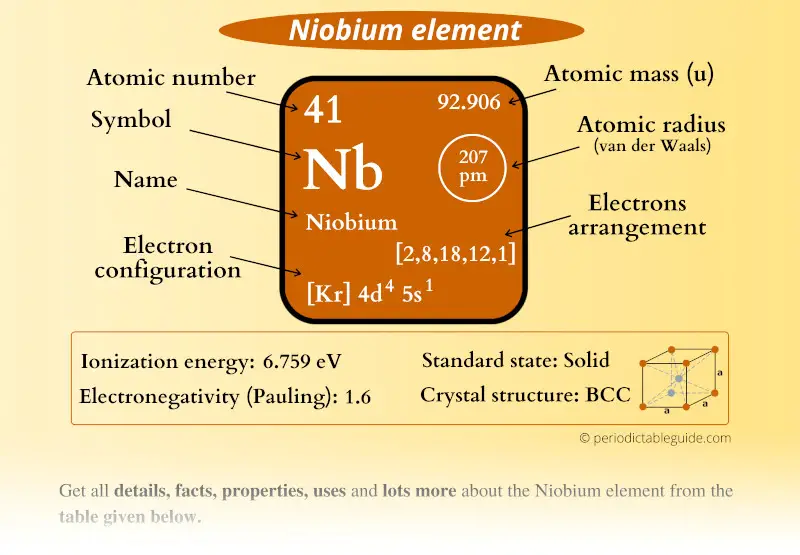
This is a SUPER easy guide on Niobium element.
In fact, the table mentioned below is the perfect information box (Which gives you every single detail about the Niobium element in Periodic table.)
So if you want to know anything about Niobium element, then this guide is for you.
Let’s finish this very quickly.
Niobium Element (Nb) Information
| Appearance | 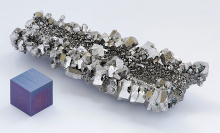 Metallic grey |
| State (at STP) | Solid |
| Position in Periodic table | 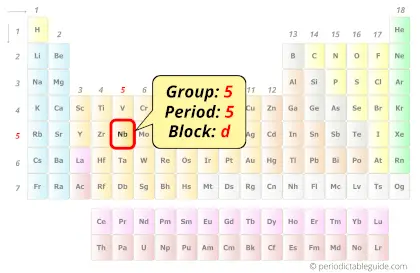 Group: 5, Period: 5, Block: d |
| Category | 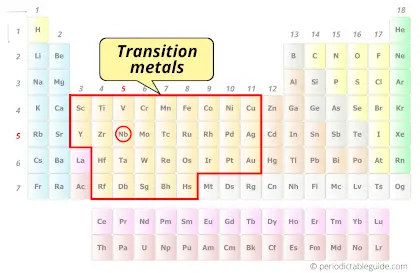 Transition metals |
| Atomic number or Protons | 41 |
| Neutrons | 52 |
| Electrons | 41 |
| Symbol | Nb |
| Atomic mass | 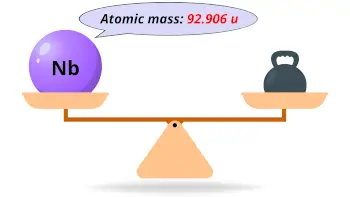 92.906 u |
| Electrons arrangement or Bohr model | 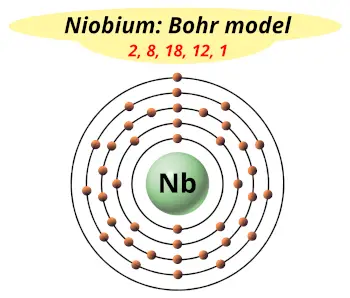 2, 8, 18, 12, 1 |
| Electronic configuration | [Kr] 4d4 5s1 |
| Atomic radius | 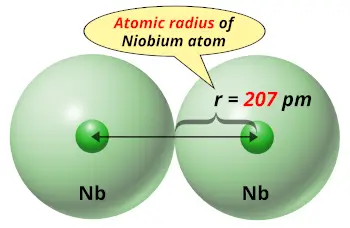 207 picometers (van der Waals radius) |
| 1st Ionization energy | 6.759 eV |
| Electronegativity | 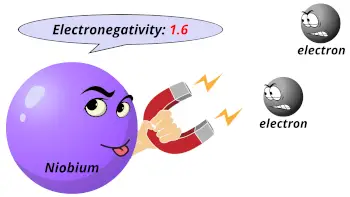 1.6 (Pauling scale) |
| Crystal structure | 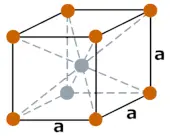 BCC (Body Centered Cubic) |
| Melting point | 2750 K or 2477 °C or 4491 °F |
| Boiling point | 5017 K or 4744 °C or 8571 °F |
| Density | 8.57 g/cm3 |
| Main isotope | 93Nb |
| Who discovered Niobium and when? | 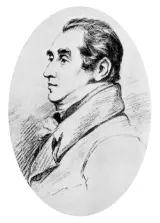 Charles Hatchett in 1801 |
| CAS number | 7440-03-1 |
Niobium in Periodic table
Niobium element is in group 5 and period 5 of the Periodic table. Niobium is the d-block element and it belongs to transition metals group.
| H | He | ||||||||||||||||
| Li | Be | B | C | N | O | F | Ne | ||||||||||
| Na | Mg | Al | Si | P | S | Cl | Ar | ||||||||||
| K | Ca | Sc | Ti | V | Cr | Mn | Fe | Co | Ni | Cu | Zn | Ga | Ge | As | Se | Br | Kr |
| Rb | Sr | Y | Zr | Nb | Mo | Tc | Ru | Rh | Pd | Ag | Cd | In | Sn | Sb | Te | I | Xe |
| Cs | Ba | La* | Hf | Ta | W | Re | Os | Ir | Pt | Au | Hg | Tl | Pb | Bi | Po | At | Rn |
| Fr | Ra | Ac** | Rf | Db | Sg | Bh | Hs | Mt | Ds | Rg | Cn | Nh | Fl | Mc | Lv | Ts | Og |
| *Ce | Pr | Nd | Pm | Sm | Eu | Gd | Tb | Dy | Ho | Er | Tm | Yb | Lu | ||||
| **Th | Pa | U | Np | Pu | Am | Cm | Bk | Cf | Es | Fm | Md | No | Lr |
←Move to: Zirconium (Zr) element – Periodic Table
→Move to: Molybdenum (Mo) element – Periodic Table
Why is Niobium in d block?
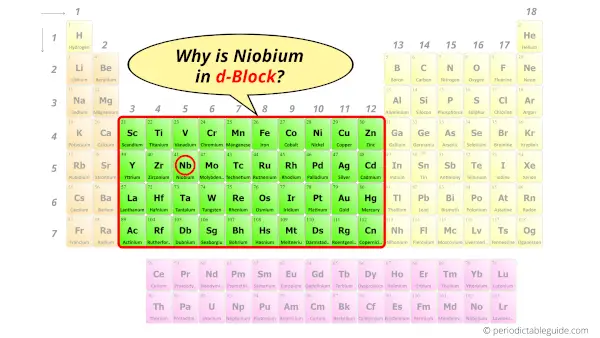
Before knowing this reason, first of all a simple question to you.
How can you determine the blocks wise position of elements?
The simple answer: The elements will lie in the s, p, d or f block will completely depend upon the subshell in which the last electron will enter.
For example; the electron configuration of Niobium is [Kr] 5s1 4d4.
So the last electron of Niobium enters the d-subshell or d-orbital.
Hence, Niobium is the d-block element.
Is Niobium a Metal, Nonmetal or Metalloid?
Niobium is a Metal. It’s a metallic grey colored hard and ductile metal. If Niobium metal is kept open in the air, it forms the oxide layer of blue, green or yellow color depending on the thickness of the oxide layer.
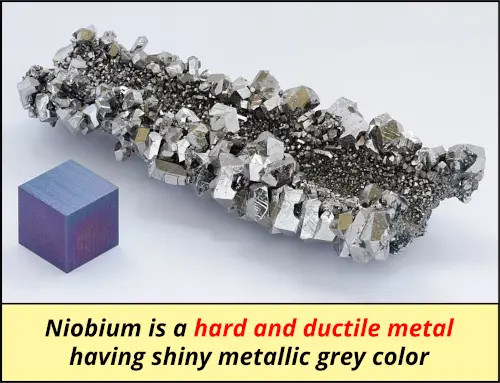
But do you know what exactly the metals are?
- Metals are the elements which lose electron/s during a chemical reaction.
In other words, metals are electron donors.
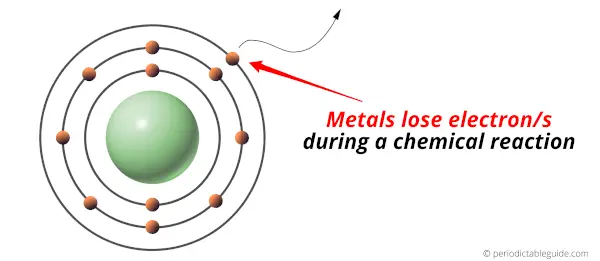
Metals are found on the left side of the Periodic table.
For more clarification, see the location of metals on the Periodic table (Image).
Why is Niobium a Transition Metal?
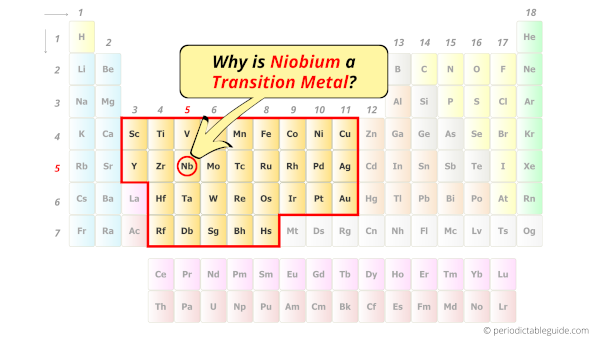
Niobium element is a transition metal because it has incompletely filled d-orbital in its ground state.
Let me explain the exact meaning of this.
According to the definition of transition metals;
The element should compulsorily have incomplete d-orbitals, either in their ground state (M) or most common oxidation states (M1+, M2+, etc) then only they are called transition metals.
Now, the ground state of Niobium means its normal state in which it has neither gained nor lost any electron/s.
So the ground state of Niobium is Nb.
And the ground state electronic configuration of Niobium is [Kr] 5s1 4d4.
In this state, if we see the electron configuration of Niobium, then it possesses incomplete d-orbitals.
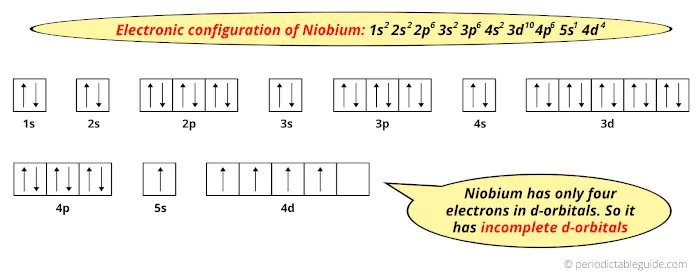
Because, there are only four electrons in the d-orbitals.
In order to have the complete d-orbitals, there must be 10 electrons in it.
But in the ground state electronic configuration of Niobium, you can see that it has only 4 electrons in d-orbitals.
Thus, Niobium has incomplete d-orbitals.
And hence, as Niobium has incomplete d-orbitals, it is considered as a transition metal.
Also see: Location of transition metals on periodic table (Image)
Does Niobium form Coloured Compounds?
Niobium is a transition metal and it has incompletely filled d-orbitals.
When light is incident on a Niobium metal, its outermost electron gets excited onto a higher energy level.
When this excited electron loses its energy, it again comes back to the lower energy level.
During this phenomenon, it emits an electromagnetic radiation which has the wavelength of visible light.
This emitted radiation has specific wavelengths depending upon the number of electrons present in the d-orbitals as well as elements with which niobium reacts.
Hence due to incomplete d-orbitals of Niobium, it forms colored compounds.
Interesting Facts about Niobium
Interesting facts about niobium element are mentioned below.
- The former name of niobium (Nb) was columbium (Cb).
- Around 80% of niobium is used in the production of steel.
- The name Niobium came from the Greek goddess “Niobe” (meaning the daughter of king Tantalus).
- According to USGS, most of the Niobium which is available today, comes from Brazil and Canada.
- If Niobium metal is kept open in the air, it forms the oxide layer of blue, green or yellow color depending on the thickness of the oxide layer.
Explore our New Interactive Periodic Table (with Rotating Bohr Models and More)

Details about this Periodic table:
- Access detailed info on all elements: atomic mass, electron configurations, charges, and more.
- View rotating Bohr models for all 118 elements.
- Get a free HD image of the Periodic Table.
Note: For future use, bookmark this Periodic table or visit “PeriodicTableGuide.com”
External resources:
- Niobium – Element information, properties and uses | Periodic Table. (n.d.). Niobium – Element Information, Properties and Uses | Periodic Table. https://www.rsc.org/periodic-table/element/41/niobium
- Niobium – Wikipedia. (2016, July 15). Niobium – Wikipedia. https://en.wikipedia.org/wiki/Niobium
- It’s Elemental – The Element Niobium. (n.d.). It’s Elemental – the Element Niobium. https://education.jlab.org/itselemental/ele041.html
- P. (n.d.). Niobium | Nb (Element) – PubChem. Niobium | Nb (Element) – PubChem. https://pubchem.ncbi.nlm.nih.gov/element/Niobium
- Tarselli, M. A. (2015, January 23). Subtle niobium. Nature Chemistry, 7(2), 180–180. https://doi.org/10.1038/nchem.2164
